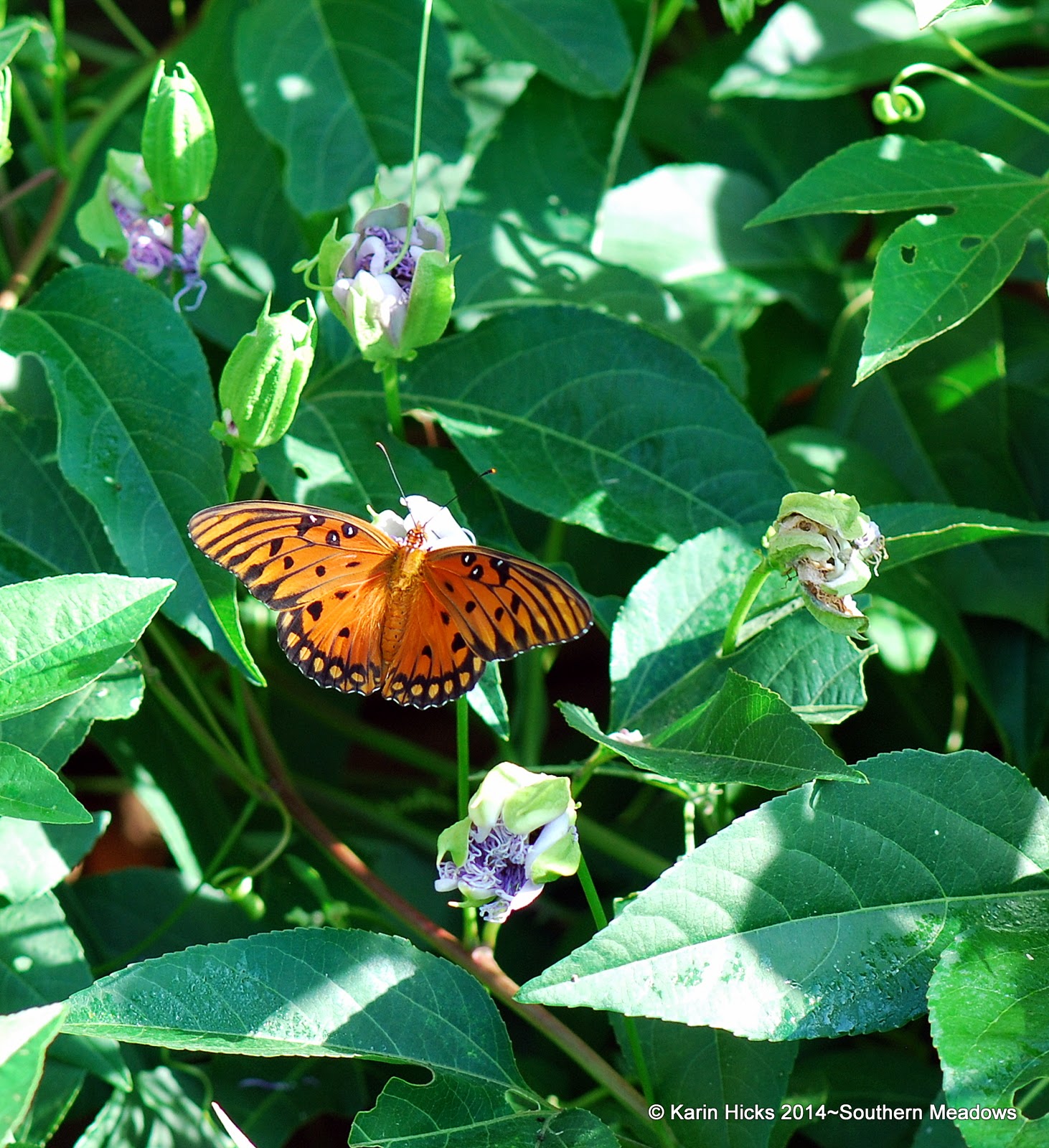I've notice over the past few years that each year one species of butterfly seems to have a banner year in my garden. I'm not sure why because all the elements are here for each stage of a number of butterfly species to thrive. Basically it isn't for lack of food. Perhaps it is the change in weather, perhaps an increase in predators, or perhaps they just naturally have boom years in their populations.
In 2012 we had tons of black swallowtail butterflies. I recorded 20 black swallowtail caterpillars on one bronze fennel plant in the spring of that year and we continued to host them on the fennel and parsley plants from spring to fall (you can see photos
here). This year the fennel, parsley and golden alexander have been barren. Last year we saw record numbers of Eastern Tiger Swallowtail butterflies. They were everywhere! They host on the tulip popular trees which grow in abundance on our property as well as black cherry.
This year was slow getting started, I suspect due to our cold, wet winter but once it started the fritillaries dominated the garden. We have masses of orange butterflies fluttering all over the garden and it is a beautiful site!
We have two species of fritillaries here in North Georgia, the gulf fritillary and the variegated fritillary. Both host on passiflora vine (aka maypop) and the variegated will also host on violas. We have masses of passionvine growing around the garden. It has happily self seeded in various locations. It makes a great ground cover but is even more stunning as a climbing vine. Check out the fruit, which thanks to the busy carpenter bees, make this happen.
There are hundreds of caterpillars munching away at the leaves. Sometimes the caterpillars even find it necessary to crawl over the blooms when they get in the way.
 |
| two instars of gulf fritillary caterpillars on passion vine |
|
| variegated fritillary caterpillar on passion vine bloom |
The vines are a bustle of activity all day long. Bees, butterflies and all varieties of pollinators are visiting the blooms, caterpillars crawl from one leaf to the next, sometimes it is a race to see who gets there first;
 |
| two gulf fritillary caterpillars crawling tandem |
 |
| three instar stages of fritillary caterpillars |
Our house seems to be one of their favorite places to go to form their chrysalis. It looks a bit like Christmas with the caterpillars and chrysalises hanging from the brick, the door and window frames and patio.
 |
| gulf fritillary caterpillar hanging in "J" | |
 |
| variegated fritillary chrysalis |
Can you believe with all these chrysalis I have yet to witness on of these butterflies emerging? But based on the number of butterflies fluttering around they are having a banner year.
 |
| gulf fritillary butterflies mating |
Have you experienced a similar fluctuation in your butterfly populations? We all know about the perils of the Monarch butterflies. We haven't seen any in our garden since fall of 2012 despite all the milkweed we've planted. I like to document the butterfly activity in our garden as it helps me analyze the habitat and be a better observer. I ask myself are there certain times of year where we are lacking nectar sources? Are there enough host plants? Are there enough overwintering sites available (leaf litter, bark, wood, etc.)? Are there new or an increase in predators? Fall is the best time of year to address these issues and I know I will be doing some more plant shopping over the next few weeks. I'm sure the butterflies will be even happier next year!










.png)
